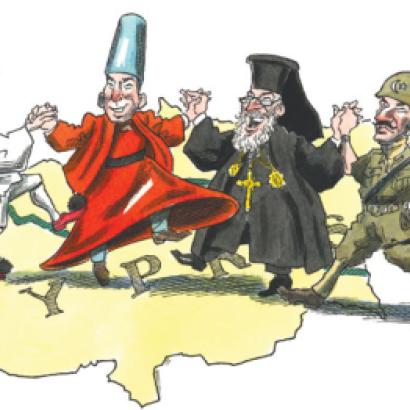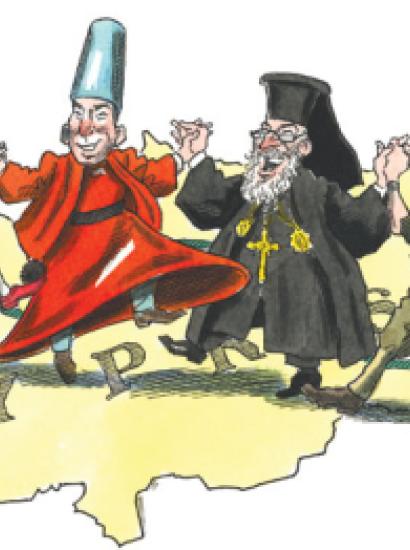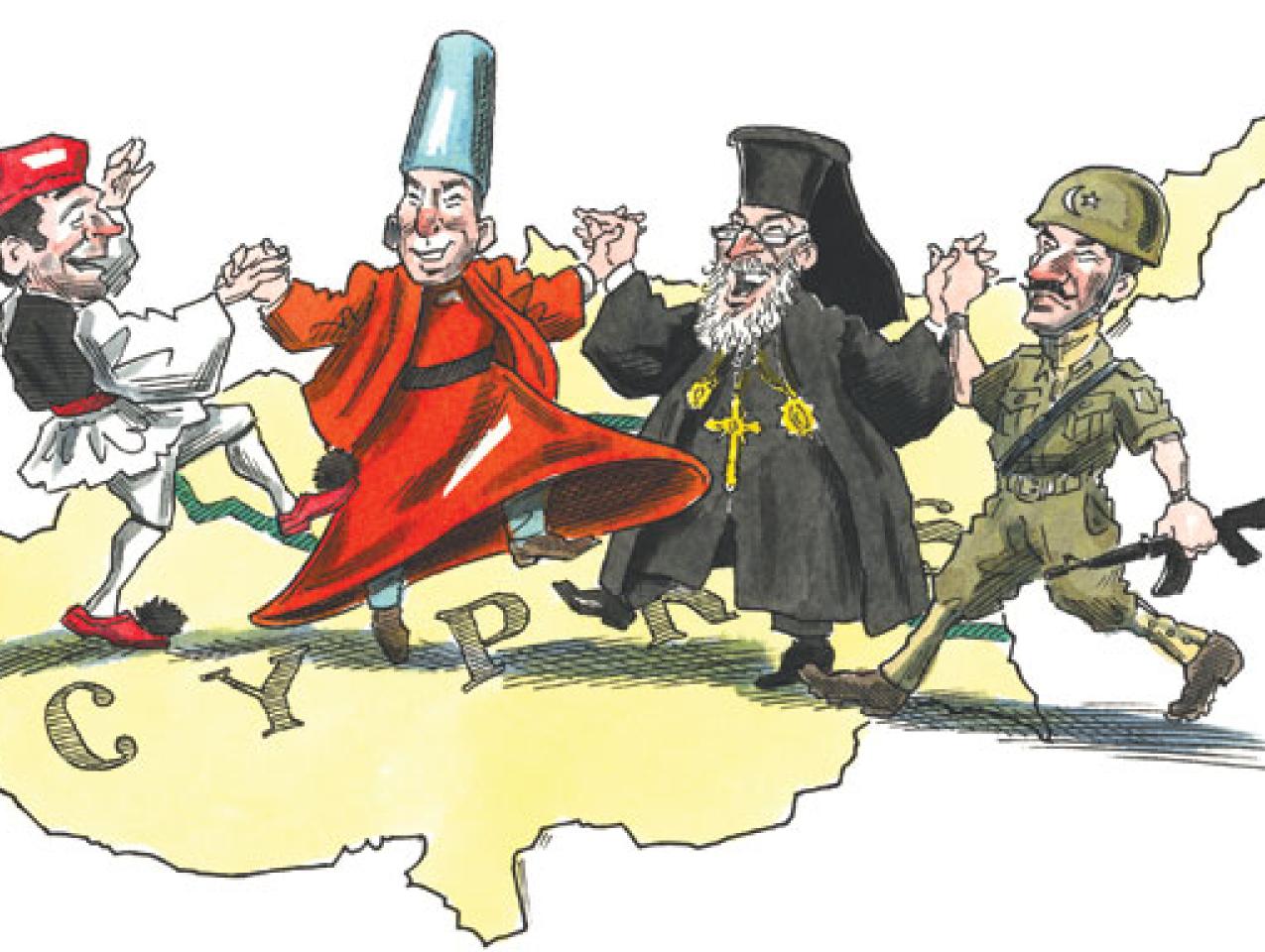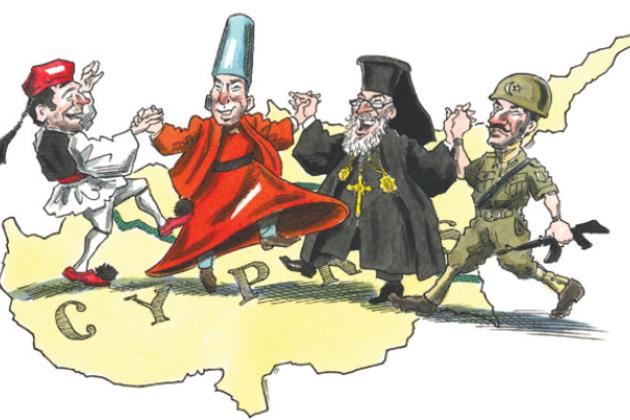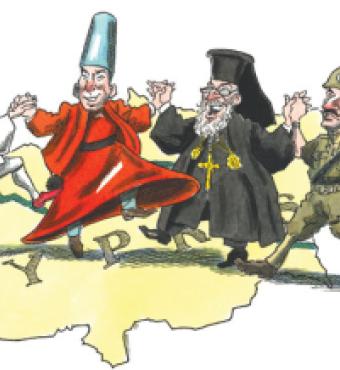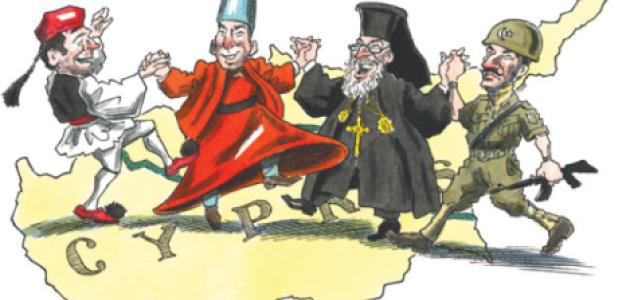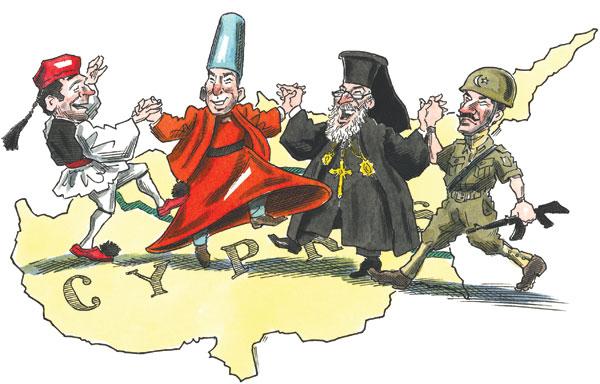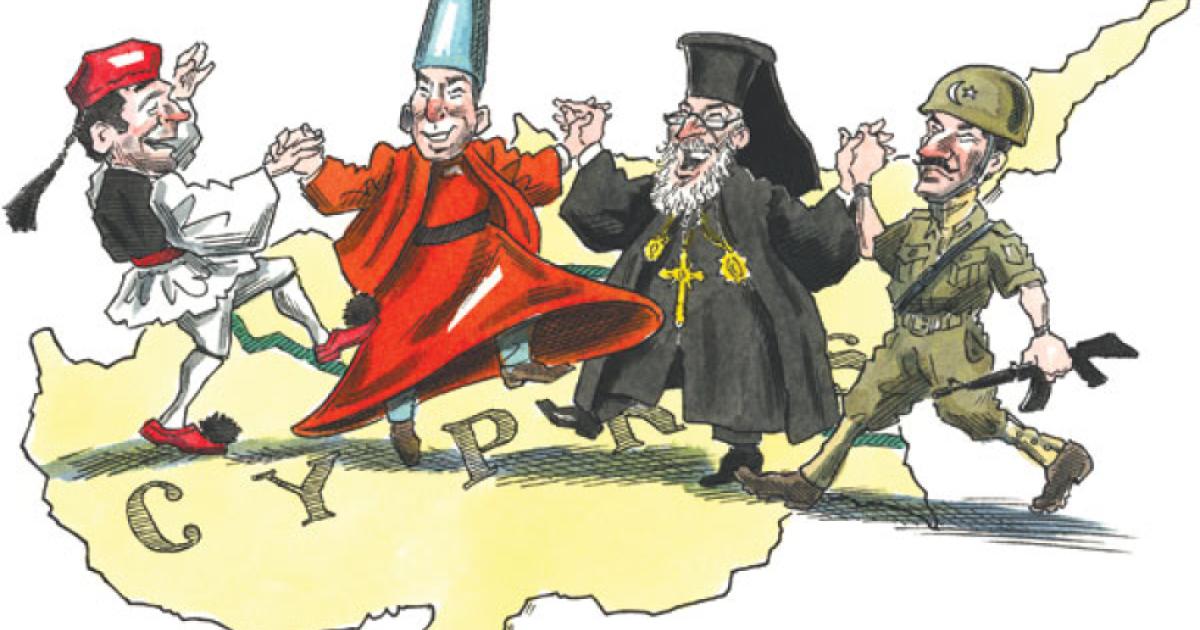Last September, Cypriot leaders opened a new round of comprehensive talks aimed at reuniting the two communities of the long-divided island. Launching the first formal negotiations since a United Nations–brokered deal failed to win the support of Greek Cypriots in early 2004, local and international leaders expressed high hopes that the latest talks might yield a lasting solution acceptable not only to the island’s two main constituent communities but also to their mainland sponsors, Greece and Turkey.
Times have changed since the last previous attempt to solve what has come to be known as the Cyprus question. Although 65 percent of the Turkish Cypriot community voted in April 2004 to accept the so-called Annan plan for unification, the political and economic divide between the two communities was further cemented just days later, when the Republic of Cyprus was formally admitted into the European Union. Although membership applies de jure to the entire island (excluding two coastal military bases over which Britain retains sovereignty), de facto it affects only the Greek Cypriot, government-controlled south; EU legislation is suspended in the north. Since 2004, the Greek Cypriots have reaped the benefits of EU membership and have adopted the euro, whereas the Turkish Cypriot zone remains dependent on minimal Turkish investment as well as recently introduced aid from the EU that aims to end the breakaway community’s economic isolation.
Such attempts to foster development in the north have generally been viewed as a sign of support from the international community for the Turkish Cypriots, given their acceptance of the Annan plan, which was backed by the European Union and the United States. In previous talks, Greek Cypriot negotiators had been quick to accuse their Turkish counterparts of trying to block a unified solution, but the 2004 referenda proved that Turkey and the Turkish Cypriots could no longer be blamed for the deadlock (although Turkish Cypriot leader Rauf Denktash had actively campaigned against the plan). Greek Cypriots’ rejection of the Annan plan provoked mostly opposition from the international community. The government of hard-line President Tassos Papadopoulos, which had led Greek Cypriot efforts to reject the plan, faced severe international criticism. Relative international isolation followed, ending only when Greek Cypriot voters, in a powerful display of support for a swift federal settlement, ousted Papadopoulos in the first round of presidential elections in February 2008. The eventual victor was Dimitris Christofias, whose election, although it made him the first communist head of state in EU history, has been widely viewed as a step toward the reconciliation of the two communities.
In a similar change in leadership in the self-declared Turkish Republic of Northern Cyprus, leftist candidate Mehmet Ali Talat rose to power in 2005, replacing Denktash.
The leadership changes on both sides of the divide signify a landmark: for the first time in the peacemaking process, both parties are represented at the negotiating table by pro-unification leaders. Whether this marked change will lead to a mutually acceptable settlement by Talat’s stated goal date of mid-2009 depends on both leaders’ ability to make concessions on such divisive issues as property rights, the fate of the Turkish settlers, power sharing and the federal structure, and the thorny issue of legality.
Further, any settlement would have to win the support of Turkey— with its 40,000 soldiers stationed in northern Cyprus—which might be difficult, given Greek Cypriot demands for total demilitarization of the island.
Meanwhile, Turkey has been elected to a nonpermanent seat on the U.N. Security Council, which means Ankara’s views on unification are even more critical.
The social and political affability so far demonstrated by Christofias and Talat, the growing realization among Greek Cypriots that this might be the last chance for reunification, and the cautious optimism on both sides of the divide indicate that the peace talks will bring the two communities closer to a settlement than at any previous time since the island’s partition thirty-five years ago. If Cyprus succeeds, its reunification will serve not only to bring about more stable relations between Turkey and the European Union but to set a precedent for ethnic and religious conflict settlement elsewhere in the region, including Israel, the Balkans, and the Caucasus.
Two communities, driven apart
Cyprus has been divided along ethnic lines since August 1974, when the Turkish military invaded the northern third of the island, occupying 37 percent of its territory in response to an Athens-backed coup meant to oust the president, Archbishop Makarios III. The coup, carried out by the militant nationalist group EOKA-B, was part of a wider Greek Cypriot campaign to achieve enosis (union) with Greece. This movement traces its roots to the spread of nationalist propaganda from Greece and through the Greek Orthodox Church starting around the turn of the twentieth century, as well as to the separate educational systems introduced by the British administrators that used the highly nationalistic curricula of Greece and Turkey. Although Turkish Cypriots (who at the time made up 18 percent of the total population) had generally favored continued British rule, Greek Cypriot agitation for self-determination eventually peaked with an outbreak of violence in the mid-1950s against the British colonial authorities. Britain granted the island independence in 1960.
Greek Cypriots increasingly realize that this might be the last chance for reunification.
Under the Treaties of Alliance and Guarantee—which granted Britain, Greece, and Turkey the unilateral right to intervene—the Republic of Cyprus was born, with a Greek Cypriot president and Turkish Cypriot vice president exercising executive power and a weighted 70:30 power-sharing arrangement in the legislature. The program of independence, however, had limited appeal to both sides: Greek Cypriots, who had long demanded an end to colonial rule, viewed self-determination as a stepping-stone toward enosis, whereas Turkish Cypriots had by then developed a desire for taksim (partition) of the island and a return to Turkish rule.
The minimal support of both communities for independence meant that the binational character of the Republic of Cyprus lasted only until December 1963, when a Greek Cypriot proposal to alter the power-sharing arrangements via a constitutional amendment resulted in a Turkish Cypriot withdrawal from the government. Civil conflict broke out. Under international pressure, Makarios III adopted a conciliatory approach to his Turkish compatriots, a move that angered Athens and the island’s pro-enosis nationalists, who took matters into their own hands by carrying out a bloodless coup in July 1974.
Over the ensuing weeks, invading Turkish forces divided Cyprus into its present Greek and Turkish zones. The Turkish Cypriot administration declared independence in 1983 as the Turkish Republic of Northern Cyprus (TRNC), a move recognized by only Turkey. The two communities lived in mutual isolation until 2003, when the Turkish Cypriot administration agreed to open up a number of crossing points, allowing monitored movement between the zones. Since then, a majority of Greek Cypriots have crossed to the other side at least once, many to visit family homes abandoned during the invasion (some of which are now occupied by Turkish Cypriots, as well as mainland Turkish settlers and other foreigners) or to take advantage of cheap consumer goods. A significant number of Turkish Cypriots have done the same, with many shopping in Greek Cypriot supermarkets or studying and working in the south. Turkish Cypriots also cross to seek medical care or to obtain Republic of Cyprus travel documents, which, unlike their TRNC passports, are valid outside Turkey.
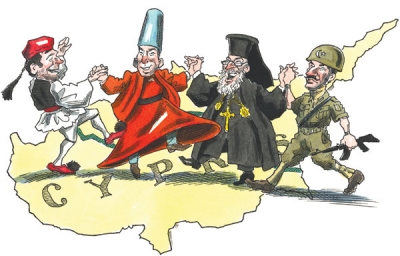
Bumps in the road to a settlement
U.N. special envoy Alexander Downer has remarked that the potential for reaching a comprehensive Cyprus settlement has never been better. Moreover, it appears that negotiators have learned from the mistakes of the 2004 referendum drama. Since Christofias’s election, the communal leaders have made a number of goodwill gestures that were noticeably absent in 2004. These include opening a new crossing point in Ledra Street at the heart of Nicosia’s divided old town and replacing a barrier often compared to a checkpoint in Cold War Berlin. Further, in response to a number of informal crossings by Talat into the government-controlled areas, Christofias made plans to pay a congratulatory visit to the north after the wedding of Talat’s daughter, a trip no sitting Greek Cypriot president has ever taken.
The Turkish Cypriot administration declared independence in 1983 as the Turkish Republic of Northern Cyprus, a move recognized by only Turkey. The two communities then lived in mutual isolation until 2003.
Last March, Christofias and Talat also agreed to set up working groups and technical committees to prepare the ground for talks on major issues, including governance, security, health, EU matters, and the economy. At a July meeting, they agreed to implement measures relating to cultural heritage, the environment, crime, and crisis management. Although these were not breakthrough issues, the affability and cooperation of both leaders helped produce a distinctly optimistic atmosphere, particularly among Greek Cypriots. On the eve of the leaders’ July 25 meeting, Christofias’s approval rating among Greek Cypriots was 70 percent, with 67 percent pleased with his handling of the peace process.
But a bumpy road lies ahead. Although the two leaders have yet to directly contradict each other, their ability to negotiate mutually acceptable solutions depends largely on how flexible the island’s behemoth northern neighbor, Turkey, is prepared to be. Any indication that Turkish Cypriot negotiators are being guided or constrained by Turkey will deeply undercut Greek Cypriots’ willingness to accept any settlement. Indeed, the widespread view that the 2004 plan overrode Greek Cypriot concerns in favor of Turkey’s played a major role in its rejection. Conversely, should Talat negotiate terms deemed unfavorable to Turkey, Ankara might refuse to comply with any solution.
The ability of the Cypriot communities to negotiate solutions depends largely on how flexible Turkey is prepared to be.
The central and most persistently divisive issue is sovereignty. During meetings in the late 1970s, negotiators agreed that any solution would have to involve the creation of a bi-communal, two-zone federation. What this means exactly has been debated ever since, with Turkish Cypriots consistently pressing for a loose confederation made up of two constituent states. Although Talat and Christofias recently agreed on single sovereignty, economy, and citizenship, the semantic issue surrounding the term two-state has the potential to hinder a final settlement. Statements made by government spokesman Stefanos Stefanou indicate that the Greek side is still pushing for the unified state to be the legitimate continuation of the legal character of the Republic of Cyprus. The Turkish and Turkish Cypriots’ position, meanwhile, has been that the republic as it existed in 1960 is now defunct. They thus remain in favor of a “virgin birth” solution, wherein the unified state is seen as a partnership between what they view as two existing states.
The two communities have also long been divided on demilitarization, with Greek Cypriots demanding complete withdrawal of all foreign troops (a demand Christofias recently extended to removal of Britain’s two base areas on the island). Surveys conducted by political analysts in 2005 indicate that most Turkish Cypriots view the presence of at least some Turkish troops in their zone as essential for their security, no doubt remembering the hostilities that erupted after the constitutional crisis of 1963. Further, Turkey would be unlikely to agree on any settlement that did not grant provisions to ensure the security of its port cities of Iskenderun and Mersin, just forty-seven miles north of the island.
Another divisive issue, which Talat has cited as a subject of major disagreement, is property. The defunct Annan plan would have allowed only a fraction of the 240,000 refugees from both communities to reclaim one-third of their dispossessed property (with the rest compensated in bonds). Reclaiming property would depend on how long the current occupants had been living there. Further, the plan placed strict limits on the number of people allowed to relocate—with no provisions for cultural and educational autonomy—to protect the ethnic character of each constituent state. The requirement for strict bi-zonality remains a core demand of both Turkey and the Turkish Cypriots.
Sovereignty, demilitarization, security, restoration of property, settlers from Turkey—divisive issues abound.
A related issue is the fate of the 100,000 mainland Turks who have settled in the north since 1974, many on former Greek Cypriot property. With many Turks having lived on and developed Greek Cypriot land for longer than ten years—the minimum requirement for continued ownership under the Annan plan—one understands why Greek Cypriots place high importance on talks regarding how many of these settlers would be allowed to remain. Christofias and Talat will be hard-pressed to find a solution supported by both Greek Cypriots and Turkey, which would inevitably be drawn into discussions on how to pay for relocating settlers.
Paying attention to the details
If negotiations fail on this or other major issues, or if a proposed solution sparks serious opposition in either community, chances for a settlement will dim. Turkey’s goodwill is surely essential to guaranteeing that any settlement plan is carried out. Negotiators will have to make sure that mistakes made in the last round of negotiations five years ago are not repeated. For example, any indication of deadlock or of bending to Turkish demands would surely spark opposition by antisettlement Greek Cypriots, who are prominent in the island’s news and electronic media.
Details of how a unified state would share power remain a source of contention, but Christofias’s statements alluding to a partnership state and a rotational presidency convey that Turkish Cypriots can count on some form of partnership status.
As for Greek Cypriots, who worry about having a plan foisted on them by international actors—fears that fed the negative atmosphere around the 2004 referenda—they may be reassured by the announcement that the current talks will be under the auspices of the United Nations, rather than its direction. In Christofias’s words, the solution is to "come from Cypriots, for Cypriots"; meanwhile, the United Nations and the European Union are to refrain from trying to fill in or gloss over any of the communities’ disagreements, as they did when formulating the Annan plan. Another hopeful sign is the lack of any artificial timetable. Compare this to the 2004 peace process, in which referenda on the plan were held just days before the island’s EU accession; some viewed the referenda as a last-ditch effort to prevent the island from acceding as a divided entity.
One hopeful sign is the lack of any artificial timetable. Compare this to 2004, when referenda on a sovereignty plan were held just days before the island’s EU accession.
It remains to be seen how far the ruling party of Turkish Prime Minister Recep Tayyip Erdogan is willing to deviate from the position of the military, which still favors a two-state solution. Former Turkish armed forces chief Yasar Buyukanit recently indicated that Turkey was unlikely to support a total withdrawal of its troops, for instance. Nevertheless, given the moderate stance on Cyprus articulated by Erdogan’s Justice and Development Party, it appears that there is room for a deal, even if it means some Turkish and Greek troops remain.
Leaders of both Cypriot communities appear for the first time to be on the same page. The balance is delicate, but they now have a historic opportunity to reach an agreeable and lasting settlement.








